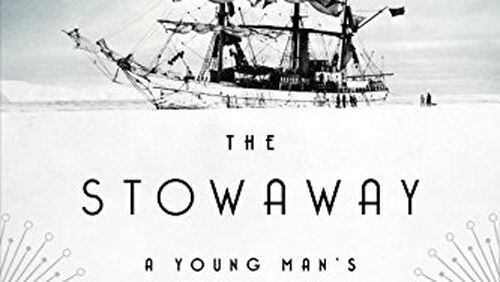The word “charming” is a laudatory adjective — don’t we all want to be considered charming? — yet when describing a book, it can sound less than flattering.
“Charming” becomes code for a story that’s merely pleasant instead of provocative, one that can be enjoyed, then blithely dismissed.
So it was with some concern that the word “charming” burbled up while reading “The Stowaway” by Laurie Gwen Shapiro.
It’s the true story of Billy Gawronski, a 17-year-old from Queens who, in 1928, stowed away on a ship bound for Antarctica. The mysterious continent was the perfect destination for aviator and adventurer Richard Byrd to reclaim the world stage after doubts arose about whether he was the first person to reach the North Pole by air. If Byrd could be the first to fly over the South Pole, the feat could restore his luster.
If Billy could be with Byrd, it would get him out of Queens and a career as an upholsterer.
Billy’s parents had emigrated from Poland before World War I, his father founding a successful upholstery business that he expected Billy to join. Billy schemed to flee. He’d long had been fascinated by Byrd and kept a scrapbook about his hero.
The book’s title is a bit of a misnomer, for Billy is quickly discovered. But a series of hapless events charms the public, and he becomes known as “the stowaway” and the Everyboy face of the expedition.
A New York Times reporter on the trip rightly foresaw a steady readership in recounting Billy’s experiences. But it’s the cultural context that Shapiro adds through her deeply researched reporting that enables Billy’s story to illuminate this particular era.
That Billy goes to Antarctica, that he returns a hero and that the spotlight inevitably moves on make up the entire dramatic arc of this book. Its charm is in how the irresistibly plucky Billy becomes a metaphor for America on the cusp of an amazing spurt of progress.
In a note, Shapiro explains how she stumbled onto his tale while researching a story about America’s oldest Polish Catholic Church. With similar serendipity, she found Billy’s elderly widow (Billy died in 1981), who shared her husband’s many scrapbooks.
Isn’t this how history sometimes is best told, when a passing curiosity melds with diligent work?
“The Stowaway” is a charming book, a glimpse of history that, by definition, fascinates and delights.
NONFICTION
“The Stowaway: A Young Man’s Extraordinary Adventure to Antarctica”
by Laurie Gwen ShapiroSimon & Schuster
256 pages, $28






